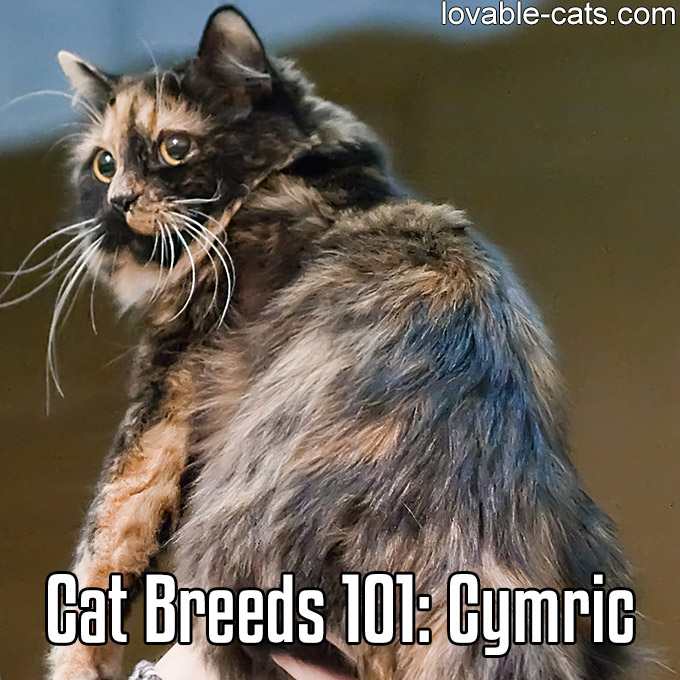
Cat Breeds 101: Cymric – Image To Repin / Share
Photo: Wikipedia – lic. under CC 3.0
The Cymric (pronounced as kim-rick) is the longhaired variety of the tailless Manx cat. Except for their fur length, the Cymric and Manx are the same and kittens of either sort may appear in the same litter.
The name comes from Cymru, the indigenous Welsh name of Wales, though the breed is not associated with Wales and the name was possibly given as an attempt to provide a Celtic-sounding name for the breed. They are called the Longhair Manx by some registries but there are also a number of associations which consider them as a separate breed, including the World Cat Federation, American Association of Cat Enthusiasts and American Cat Fanciers Association. [1]
The first officially recorded Cymric cats were born in Canada in the 1960’s. In the latter part of the decade, Manx breeders began to focus on the occasional long-haired kittens in litters. The long-haired gene is recessive to the short-haired gene, which made it necessary to introduce outcrosses of long-haired, fully-tailed cats into Manx breeding programs in order to produce the long-haired variety. Introducing these outcrosses widened the gene pool and strengthened the type of Cymric cat we know today. [2]
The Cymric has a round head, round eyes and even a rounded rear end. The tail types are broken into four classification: ‘rumpy’ (tailless), ‘rumpy-riser’ (these cats have a short knob of tail), ‘stumpy’ (these cats have a short tail about 1/3 if a normal tail length) and ‘longy’ (full tail). Adult Cymric cats weigh seven to thirteen pounds and have a silky, medium-length double coat which comes in many colors and patterns. They may lack a tail but Cymrics have a powerful rear end and are excellent jumpers – even without a natural counterweight to aid their balance. [3]
Cymrics are intelligent, affectionate and fun-loving. They typically get along very well with other animals including dogs. Like their short-haired counterparts, Cymrics are extremely loyal to their humans and like to spend as much quality time with them as possible. They can be taught tricks and are very playful.
Despite their outgoing temperaments, these cats are uniformly gentle, not aggressive and are not known to be pushy, forward or demanding of attention. [2]
References:
[1] https://en.wikipedia.org/wiki/Cymric_cat
[2] https://www.petwave.com/Cats/Breeds/Cymric.aspx
[3] https://www.vetstreet.com/cats/cymric#overview
Cymric Cat Video:
